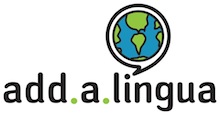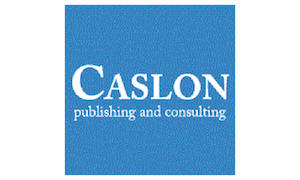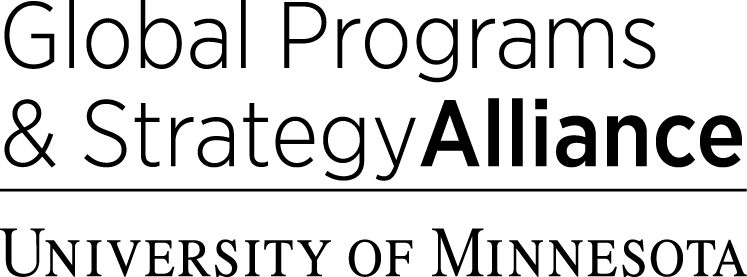Sixth International Conference on Immersion and Dual Language Education
Conference Strands
Strand I: Immersion Pedagogy and Assessment
This strand focuses on the theoretical and practical questions that underpin instructional and assessment practices in a variety of immersion and dual language settings. It showcases innovative classroom-oriented research and teacher practices that address the challenges of promoting and assessing language proficiency, biliteracy across the curriculum, and rigorous content mastery through the immersion or partner language.
Critical Questions:- What scaffolding strategies are needed to make a rigorous curriculum accessible to all learners through the immersion or partner language?
- How can teachers capitalize on engagement strategies to maximize students' opportunities for language production?
- How can teachers leverage digital technologies to enhance biliteracy development?
- What culturally relevant instructional and assessment practices can teachers adopt to foster inclusiveness in diverse classrooms?
- How do teachers effectively use formative and summative assessment to monitor student progress and inform instruction?
- How do teachers personalize learning to meet the needs of all students in a variety of immersion and dual language classrooms?
- How can teachers most effectively integrate a focus on language during subject-matter instruction?
- How can teachers effectively collaborate across languages to promote biliteracy development and also across language and content areas to promote coherence across the curriculum?
- What forms of intervention are effective for students who are experiencing learning difficulties?
- How do common core curriculum standards impact pedagogical and assessment practices in the classroom?
Strand II: Culture, Identity, and Community
This strand focuses on the important goals of engaging communities in immersion, dual language, and language revitalization efforts and building relationships through and across cultural differences. Within this strand, topics to be addressed include: exploring how participant identities are constructed in immersion and dual language contexts; examining issues of social justice, equity, and belonging in the larger sociopolitical arena; developing and understanding biculturalism and/or multicultural competencies; and providing measures that practitioners can implement at program and classroom levels to help the field better embrace diversity in our increasingly interconnected world. Proposals may include critical approaches at the classroom, school, district, and/or community levels.
Critical questions:- How do students develop greater intercultural sensitivity and multilingual identities through sustained program participation?
- What are some ways teachers successfully position themselves and their students as they teach both language and culture?
- How do distinct immersion and dual language programs define, articulate, and teach culture?
- What are ways to successfully address societal inequities among students of different socioeconomic, linguistic, racial, and ethnic backgrounds?
- How does immersion and dual language education impact the identity of its participants and their communities?
- What are some innovative approaches to bringing parent communities into schools?
- How do we assess the effectiveness of cultural pedagogies in the classroom? How does the community perceive immersion and dual language programs in their midst?
- How do students perceive their own culture/identity and their relationship to students of other cultural backgrounds in the classroom and in their communities? How are these perceptions transformed through dual language education?
- How do immersion and dual language programs negotiate cultural innovation and cultural tradition?
Strand III: Program Design and Evaluation, Leadership, and Educator Development
Immersion and dual language programs must address a number of important issues in program design and implementation as well as educator development in order to successfully serve students and their families. Although all programs have a number of features in common, they also have distinct considerations. Educators need to understand how to align program design and implementation features effectively with specific purposes, learner populations, and community needs. This strand welcomes sessions related to program models, educator preparation and development, program administration and leadership, student diversity and recruitment, and other internal and external challenges pertaining to program design, implementation, sustainability and expansion, and assessment and program evaluation.
Critical questions:- What challenges exist for leaders of various program models and in what ways have leaders effectively overcome these challenges?
- What school-wide assessment and program evaluation methods and tools can be used to support and strengthen programs?
- What research-informed instructional designs and sustainability and expansion plans have proven effective in articulating programs to promote a preK–20 sequence?
- How do programs assure accessibility for and address the needs of students from diverse backgrounds (socioeconomic, linguistic, racial, cultural, developmental)?
- What skills, dispositions, and knowledge need to be developed in teacher and administrator preparation and in-service professional development programs? How are they best developed?
- How do teacher education and professional development experiences need to be modified to address the needs of immersion teachers across a range of levels (from pre-school to tertiary immersion)?
- How are teachers best prepared to address the needs of at-risk learners?
Strand IV. Policy, Advocacy, and Communications
School, district, state and national policies and public opinion impact immersion and dual language education. As a result, there is an ongoing need to identify, educate, and engage stakeholders to monitor policy development, advocate for high-quality program design and implementation, and communicate with the public about these programs and their outcomes. This strand addresses important questions regarding language policy and planning; legislative mandates; state, national, and international advocacy initiatives; and strategies for expanding support for immersion and dual language education.
Critical questions:- How do school, district, state, and federal standards and policies contribute to or impede high-quality design and implementation of various types of programs?
- What strategies can stakeholders use to create, implement, and sustain effective programs, practices and policies?
- What are effective ways to communicate with stakeholders about the relationship between program outcomes and high-quality implementation?
- How can programs meet legislative initiatives while maintaining fidelity to the model?
- What policies and practices exist that serve to limit or expand the participation of specific groups of students or teachers?
- In what ways are policy makers and program stakeholders facilitating immersion teacher recruitment, licensure, and hiring practices?













